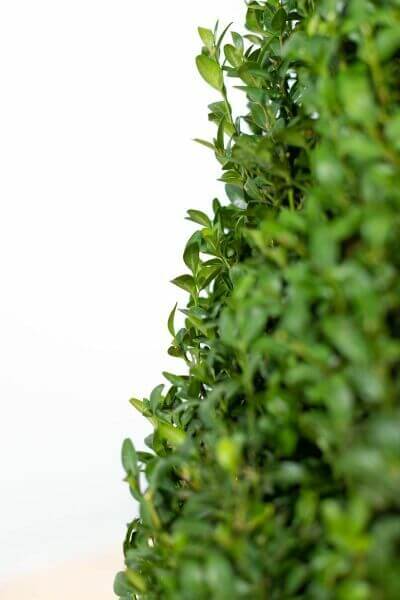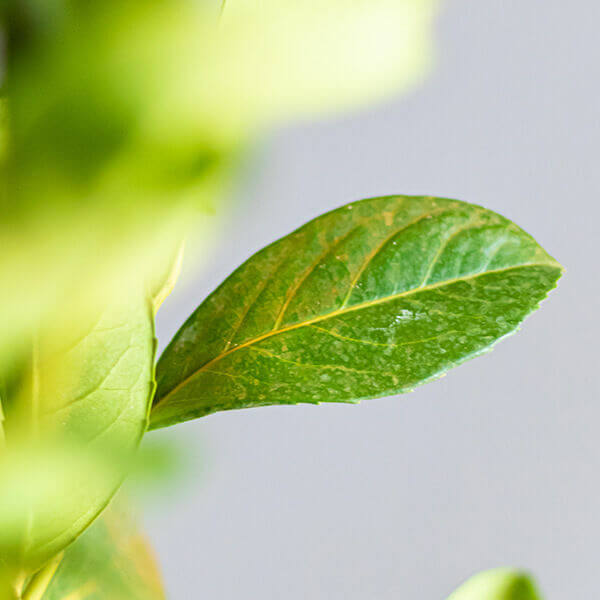Best Hedge Plants For Security Hedges
Best Hedge Plants For Security Hedges
Blog Article
Hedging Plants For Autumn Color
Boost your garden's attraction with rich hedge ranges such as Yew (Taxus), Thuja, Laurel, Photinia, and Bamboo, commemorated for their structural integrity and ecological advantages.
Yew and Thuja provide evergreen protection and winter season durability, while Laurel uses rapid growth and broad, aromatic leaves.
Photinia includes seasonal charm with its dynamic red foliage, and Bamboo provides a low-maintenance, serene atmosphere.
These hedges enhance air quality, reduce noise, and produce tranquil, personal spaces.
Appropriate planting, spacing, and maintenance guarantee energetic growth and environmental consistency.
Check out how these lush varieties can raise your garden's appeal and well-being.
Key Takeaways
Transform Your Garden With Lush Hedge Ranges
- Select Yew for its thick, evergreen development and unparalleled longevity.
- Select Laurel for its quick development and broad leaves, ensuring quick personal privacy.
- Pick Photinia for its lively seasonal foliage, which turns a striking dark red.
- Utilize Bamboo for a low-maintenance, winter-hardy hedge with aesthetic appeal.
- Space plants 2-3 per meter and prune routinely for ideal growth and health.
Popular Hedge Plants
When changing a garden with lush hedge varieties, it's vital to think about popular hedge plants such as Yew, Thuja, Laurel, and Photinia due to their special attributes and advantages.
Yew (Taxus) is extremely respected for its longevity and thick, green development, making it a prime option for sustaining landscapes.
Thuja is kept in mind for its evergreen foliage and robust winter durability.
Photinia adds seasonal vibrancy with red leaves that darken in time, creating dynamic visual appeal.
Laurel offers rapid growth and aromatic, broad leaves, perfect for fast personal privacy.
Furthermore, Bamboo is an outstanding option for ambiance, offering a low-maintenance, winter-hardy option that boosts the garden's visual with its sophisticated, swaying walking sticks.
These selections deal with a range of horticultural needs and preferences.
Advantages of Garden Hedges
Garden hedges offer a wide range of benefits, making them an important addition to any landscape. These natural barriers are economical to implement and provide substantial wind defense, improving air circulation and adding to noise decrease. The thick foliage of hedges like Thuja and Beech ensures personal privacy by obstructing presence, producing a remote and peaceful environment.
Hedges likewise play an important role in microclimate guideline, offering a steady environment that promotes plant development and reduces temperature level changes. Their intricate leaf structures filter toxins, improving air quality and adding to a healthier garden community.
Moreover, hedges excel in sound decrease, absorbing and deflecting acoustic waves to lower ambient noise levels. This dual performance of providing both visual and acoustic personal privacy improves the total tranquility and visual appeal of any garden.
Planting and Maintenance Tips
For a successful hedge, careful preparation of the planting area is essential. Guarantee the soil has correct pH and drainage to support strong root development.
Area the plants appropriately for the chosen types. Water the hedge regularly during its initial development phase, adjusting as needed with seasonal modifications.
Carry out a systematic insect control and illness avoidance method, using chemical or organic treatments when needed. Frequently inspect for aphids, mites, and fungal infections.
Apply mulch to keep wetness and suppress weeds. Seasonal pruning promotes dense growth and air flow, vital for plant health.
Following these standards will assist you cultivate a lively, well-maintained hedge that enhances the charm of your garden.
Spacing and Trimming Guidelines
Spacing and Trimming Guidelines
Appropriate spacing and trimming are essential for cultivating healthy, visually appealing hedges. Sufficient spacing guarantees each plant gets adequate nutrients, light, and air flow.
Follow these standards for ideal hedge maintenance:
- Spacing: Position hedge plants 2-3 plants per meter to encourage robust growth.
- Pruning Techniques: Regular pruning is essential for maintaining desired hedge height and shape. Cut brand-new development in summertime and cut back older wood during winter.
- Seasonal Care: Change cutting schedules and approaches according to seasonal requirements to guarantee plant health.
- Hedge Height: Regularly monitor and cut to preserve the preferred hedge height and achieve consistent aesthetics.
Sticking to these actions will ensure your hedge prospers, improving both the appeal and performance of your garden.
Selecting the Right Hedge
Picking the Right Hedge
Picking the appropriate hedge involves assessing elements such as fully grown height, foliage density, and ecological strength. Successful hedge plant selection needs understanding each species' development qualities and site-specific flexibility.
For instance, Yew (Taxus) offers exceptional longevity and dense growth, while Thuja is significant for its winter season durability. In addition, thinking about maintenance requirements is essential; fast-growing species like Laurel or Privet need regular cutting, whereas low-maintenance choices like Bamboo or Ivy may be more suitable for those seeking very little upkeep.
Ecological factors such as soil type, light schedule, and moisture conditions need to also direct the selection process. This mindful approach guarantees the picked hedges will flourish, supplying both aesthetic and practical benefits to the garden landscape.
Shipment and Planting Advice
To ensure your hedge plants prosper, they should be delivered by specialized carriers and planted without delay upon arrival.
Follow these important actions for effective planting:
- Soil Preparation: Enrich the soil with raw material to enhance drain and nutrient material.
- Planting Depth: Create a trench twice the width and equivalent to the depth of the root ball.
- Watering Strategies: Water thoroughly after planting, keeping the soil consistently wet however not filled.
- Mulching: Apply a layer of mulch to retain moisture and suppress weeds.
Client Assistance and Service
Offered the crucial function of timely assistance in horticultural pursuits, our customer support team is offered six days a week through telephone, email, and social media to offer professional advice and promptly resolve any issues. Their dedication to fast reaction times makes sure client complete satisfaction by resolving inquiries associated with plant health, optimum planting techniques, and maintenance schedules.

Action Time
-----------------
This extensive support group, reinforced by a stellar 9.3/ 10 client score, highlights our commitment to boosting the gardening experience for every single client.
Frequently Asked Concerns
The Length Of Time Does It Take for Hedge Plants to Establish?
Hedge plants usually need one to three years to end up being completely established, with the specific period varying by types and growing conditions.
Efficient care throughout this crucial period is vital for robust growth. Constant watering, watchful weed control, and appropriate fertilizer application are essential in promoting strong root development.
For instance, fast-growing species like Laurel may develop quicker, while slower-growing ranges such as Yew might take longer. Thorough maintenance speeds up the establishment procedure, leading to healthy and dense hedges.
What Are the Finest Hedge Plants for Privacy?
The concern of the finest hedge plants for privacy includes examining evergreen and deciduous choices.
Evergreen hedges like Thuja, Laurel, and Cypress supply year-round coverage, making sure continuous personal privacy.
In contrast, deciduous hedges such as Beech provide seasonal personal privacy, shedding leaves in chillier months.
Key maintenance ideas for personal privacy hedges include routine trimming, fertilizing in spring, and appropriate spacing-- normally 2 to 3 plants per meter.
Furthermore, constant watering and diligent weed removal are important for promoting healthy, thick development.
Can Hedge Plants Bring In Wildlife to My Garden?
Yes, hedge plants can bring in wildlife to your garden by supplying necessary advantages like shelter, food, and nesting sites, therefore improving regional biodiversity. For circumstances, yew, holly, and laurel are outstanding for attracting birds, while ivy supports a range of insects.
Nevertheless, it's important to keep in mind that there are some drawbacks, such as increased upkeep to handle insects and routine upkeep. Thoroughly selecting and preserving hedge ranges can help stabilize these drawbacks and benefits, eventually fostering a dynamic and sustainable ecosystem in your garden.
Are There Any Blooming Hedge Plants Available?
Yes, there are flowering hedge plants available that can improve the charm of your garden.
For instance, Elaeagnus, also known as Olive Willow, produces aromatic white flowers in the fall, including a touch of elegance.
Photinia, another popular choice, showcases dynamic red leaves that grow into an abundant green, creating a dynamic visual impact throughout the seasons.
To make sure these plants grow, it's vital to practice appropriate pruning methods and seasonal upkeep, such as cutting brand-new development in the summer season and cutting back in the winter.
These steps will help preserve the health and visual appeal of your blooming hedges.
How Do I Avoid Insects in My Hedge Plants?
To avoid bugs in hedge plants, use natural bug control approaches and keep correct hedge care. Present beneficial insects like ladybugs, which prey on harmful pests, to create a well balanced environment.
Regularly inspect your hedges for indications of invasion and quickly eliminate any afflicted parts to prevent the spread. Make sure the health of your hedges by applying well balanced fertilizers and offering appropriate water.
Use mulching to retain soil moisture and correct spacing to decrease plant tension and promote robust development. These practices jointly help in decreasing insect issues and maintaining a healthy hedge.
Conclusion
In essence, picking the right hedge varieties such as Yew, Thuja, and Laurel can change any garden into a peaceful sanctuary. These plants offer year-round greenery, boost visual appeal, and offer useful advantages like noise decrease and wind defense.
Appropriate planting techniques, precise spacing, consistent watering, and seasonal trimming are essential for ideal growth.
Dependable shipment services and professional customer assistance guarantee a smooth experience from purchase to planting, making it simpler than ever to elevate your outside space.
Garden hedges provide a wide range get more info of advantages, making them a valuable addition to any landscape. These natural barriers are cost-effective to execute and offer substantial wind security, enhancing air blood circulation and contributing to sound reduction. The thick foliage of hedges like Thuja and Beech ensures personal privacy by obstructing presence, creating a remote and serene environment.

Pruning Strategies: Regular pruning is important for maintaining wanted hedge height and shape. Trim new development in summertime and cut back older wood during winter season.
Report this page